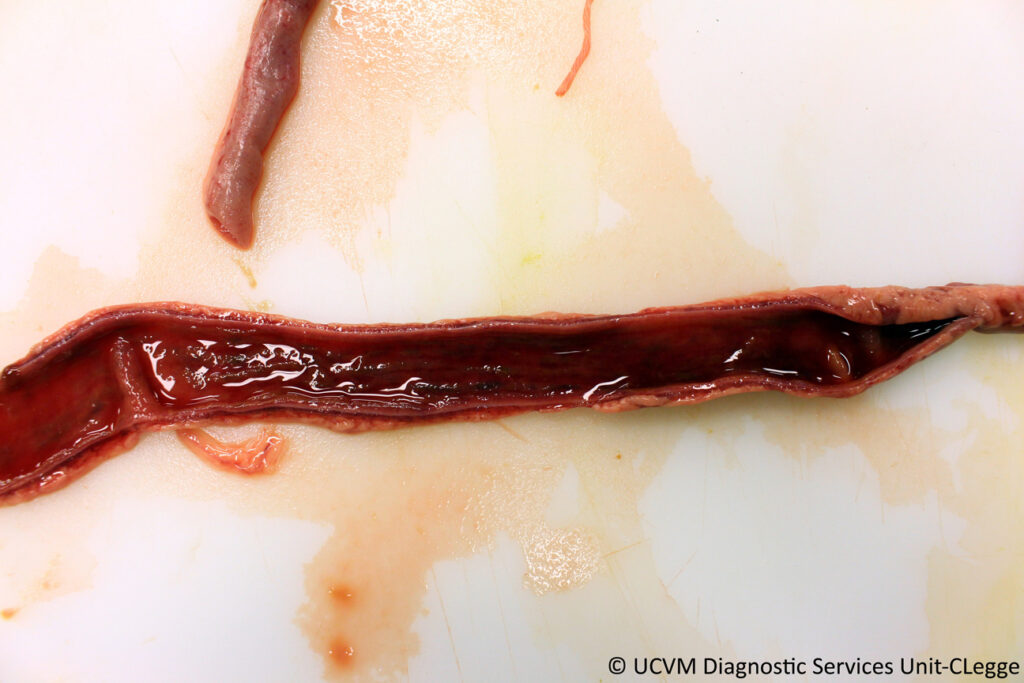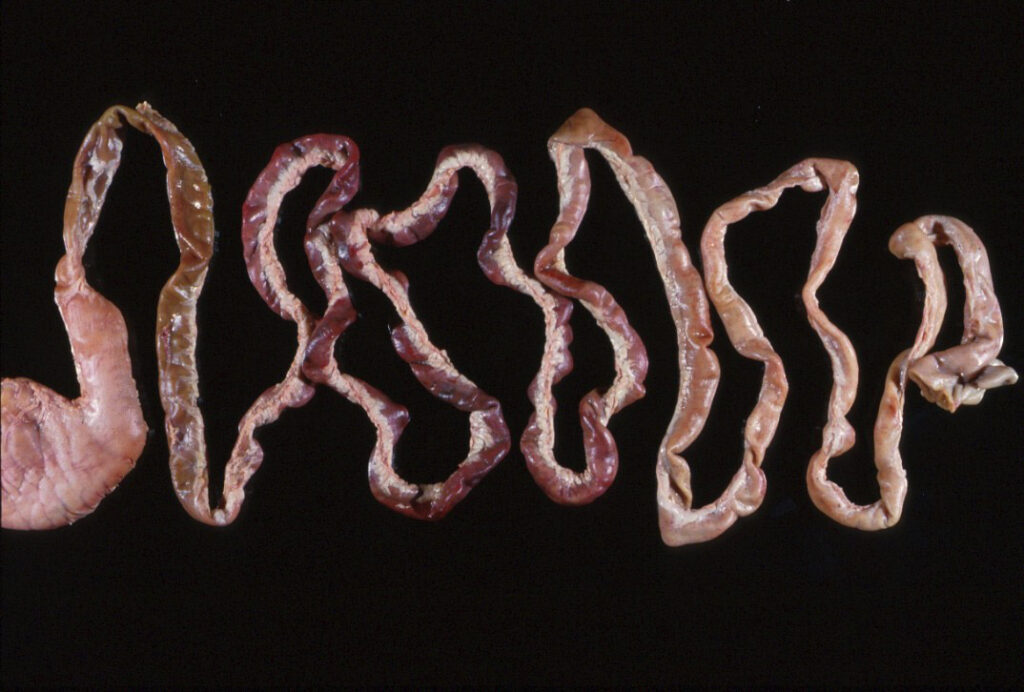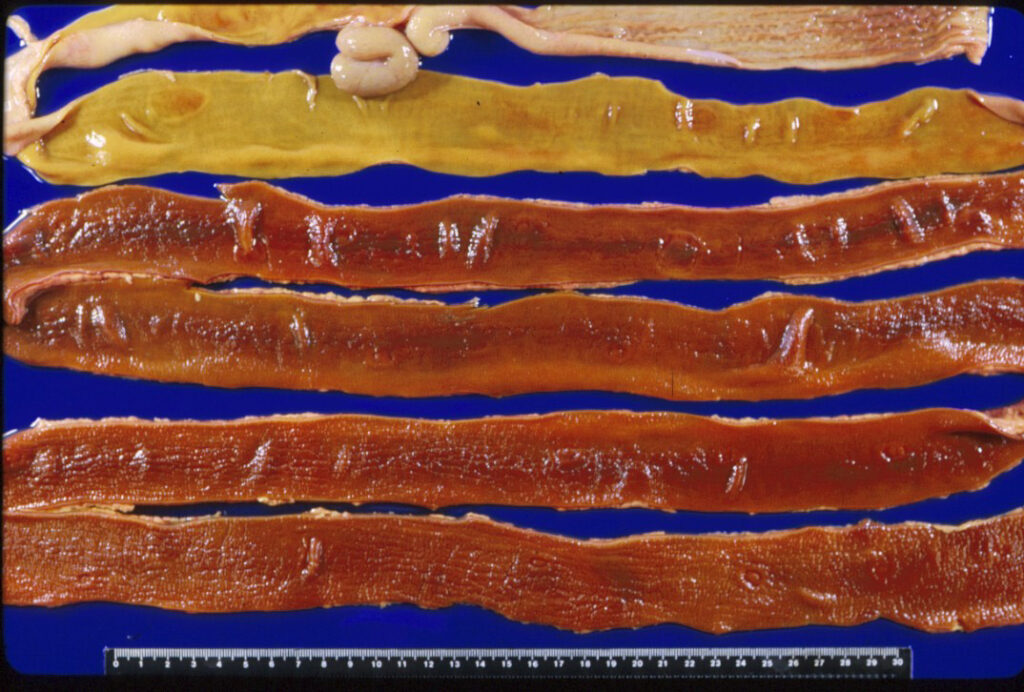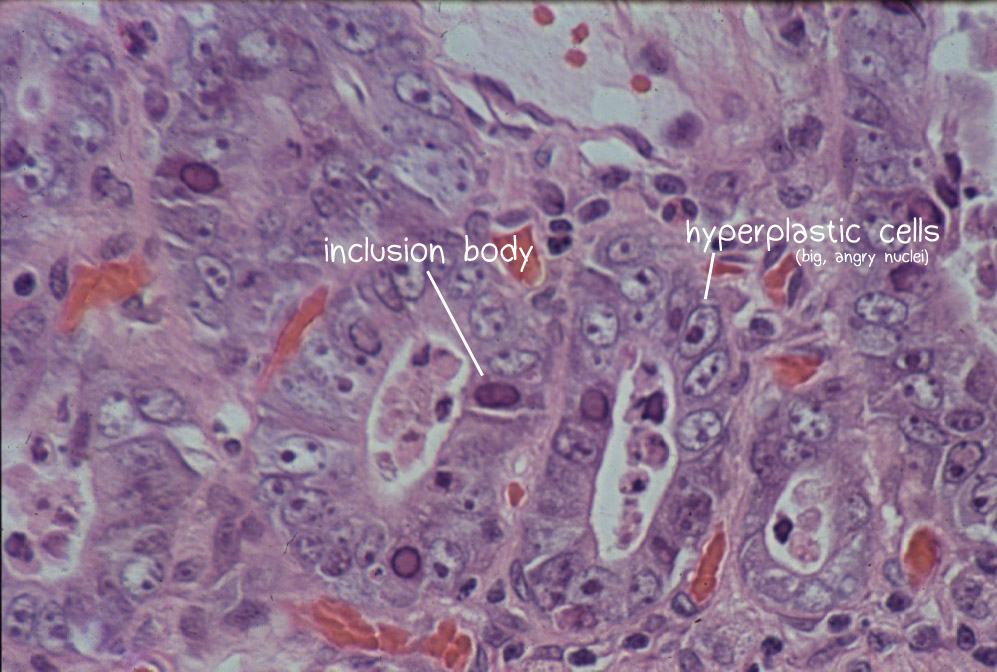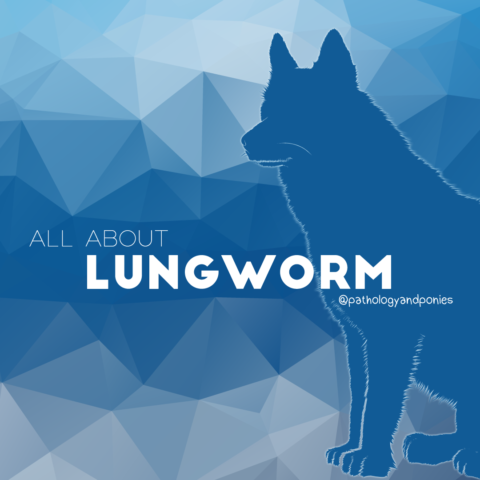Today’s path rounds are on 𝐜𝐚𝐧𝐢𝐧𝐞 𝐩𝐚𝐫𝐯𝐨𝐯𝐢𝐫𝐮𝐬! This was a request ![]()
𝐖𝐡𝐚𝐭 𝐢𝐬 𝐢𝐭?
𝐏𝐚𝐫𝐯𝐨𝐯𝐢𝐫𝐮𝐬𝐞𝐬 are small viruses that tend to infect the nucleus of cells they infect. There are many different types of parvoviruses, so today we will specifically talk about canine parvovirus, which is a common cause of diarrhea in dogs.
𝐖𝐡𝐨 𝐠𝐞𝐭𝐬 𝐢𝐭?
Dogs, coyotes, wolves and other canids are susceptible to this virus. This virus can affect all ages of dogs, however we most commonly see it in young, unvaccinated dogs these days.
𝐖𝐡𝐚𝐭 𝐜𝐚𝐮𝐬𝐞𝐬 𝐢𝐭?
This virus is spread between animals by ingesting feed contaminated with feces from an infected animal, or from interacting with the environment an infected animal has been in. After the virus enters the animal, it invades into the tonsils and 𝐏𝐞𝐲𝐞𝐫’𝐬 𝐩𝐚𝐭𝐜𝐡𝐞𝐬 (the lymph nodes of the intestine). From there, the virus spreads to the surface of the intestine, where it causes damage to the cells. The cells of the intestine surface are normally what allows an animal to absorb nutrients and water, so these animals develop a profound diarrhea because they simply can’t absorb what they’re eating.
𝐖𝐡𝐲 𝐢𝐬 𝐭𝐡𝐢𝐬 𝐚 𝐩𝐫𝐨𝐛𝐥𝐞𝐦?
Having massive, uncontrolled diarrhea is a big problem, especially in younger animals. Without being able to absorb water properly, these animals become severely dehydrated. They also can have severe imbalances of sodium, potassium, and other electrolytes because they can’t absorb them from their diet. These animals often bleed into their intestinal tract as well due to the surface damage, which can cause them to become anemic. Ultimately, all of these different factors can lead to death in these patients, unless they are properly, and quickly, treated.
𝐇𝐨𝐰 𝐢𝐬 𝐢𝐭 𝐝𝐢𝐚𝐠𝐧𝐨𝐬𝐞𝐝?
This disease is a top consideration in any young dog presenting with diarrhea. To confirm the diagnosis, the feces is tested for the virus directly, or the animal’s blood may be tested for antibodies against the virus.
𝐇𝐨𝐰 𝐢𝐬 𝐢𝐭 𝐭𝐫𝐞𝐚𝐭𝐞𝐝? 𝐇𝐨𝐰 𝐢𝐬 𝐢𝐭 𝐩𝐫𝐞𝐯𝐞𝐧𝐭𝐞𝐝?
Any dog positive for parvovirus must be quarantined immediately, to prevent spread of infection. From there, these dogs need to receive fluid therapy and electrolytes straight away to counteract the dehydration. They also often need nutrients delivered directly into their bloodstream, since their intestine can’t do its job absorbing nutrients! This treatment is often extremely labour-intensive and costly, requiring 24/7 veterinary care and monitoring.
The best method of prevention is vaccination, especially because most infected dogs do not develop symptoms! These dogs can shed infective viral particles into the environment, all while appearing perfectly healthy. Furthermore, this virus can persist for months to years in the environment, just waiting to infect your dog. So if your dog interacts with any other dogs, or even interacts with an environment other dogs have been in, it is super important to vaccinate against this disease to prevent your pet from getting infected.
𝐏𝐡𝐨𝐭𝐨𝐬
1-4) Examples of very sad intestines in parvovirus patients. As mentioned before, this virus often causes blood loss into the intestine, which can make an already sick patient even worse!
5) An example of the intestine seen under the microscope. Those big purpley blobs are actually the virus, hanging out in something called an 𝐢𝐧𝐜𝐥𝐮𝐬𝐢𝐨𝐧 𝐛𝐨𝐝𝐲. This intestine is also showing signs of 𝐡𝐲𝐩𝐞𝐫𝐩𝐥𝐚𝐬𝐢𝐚, or growth, as it desperately tries to repair the damage caused by the virus.
𝐒𝐨𝐮𝐫𝐜𝐞𝐬
Maxie, G. Jubb, Kennedy and Palmer’s Pathology of Domestic Animals, Volume 2. Sixth Edition.
Gallagher, A. Canine Parvovirus. Merck Veterinary Manual, 2020.
Photo 1 © University of Calgary Diagnostic Services Unit.
Photos 2-5 © Noah’s Arkive contributors Weeks, Sagartz, Ramos, Nuehring licensed under CC BY-SA 4.0.

